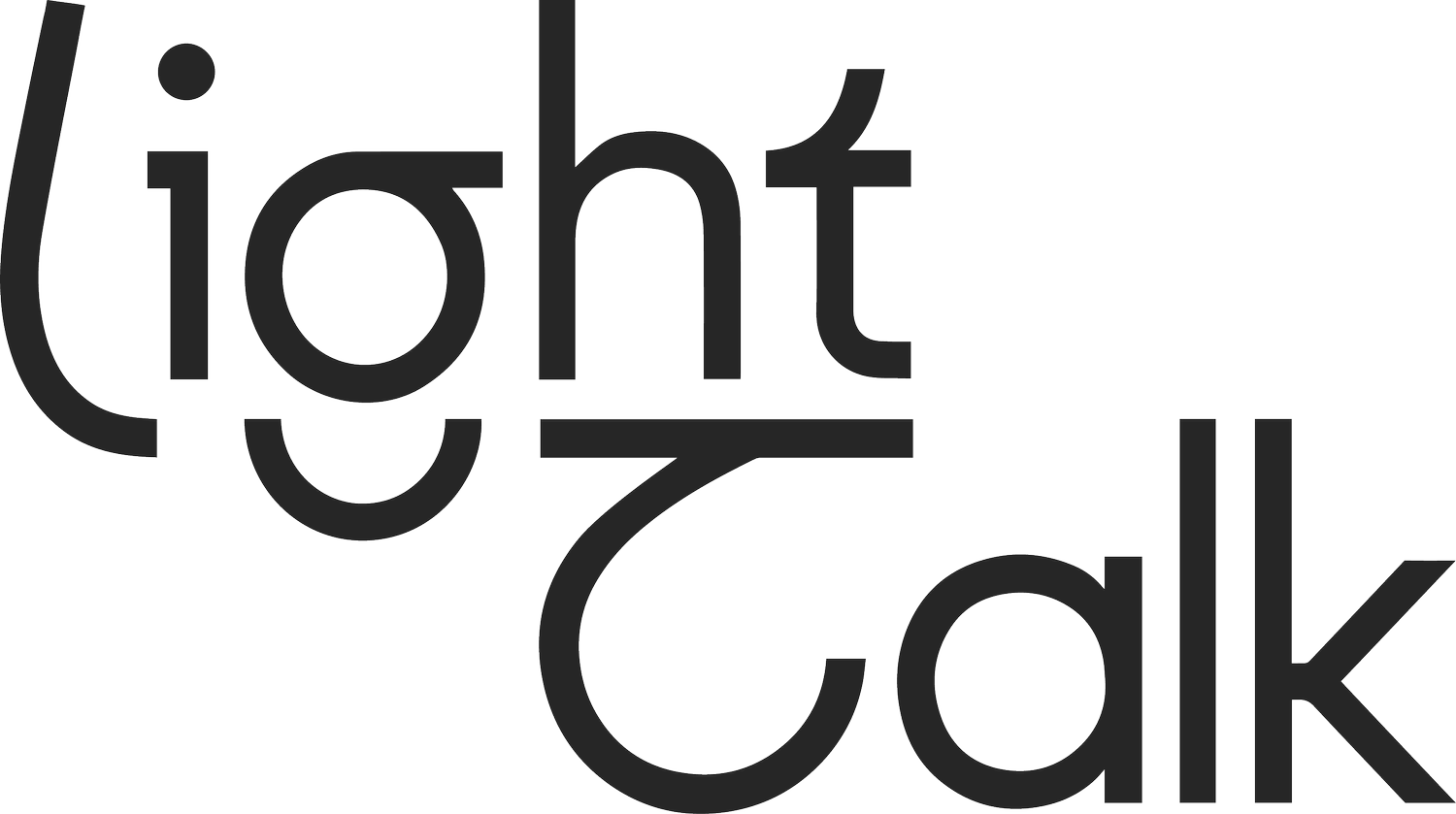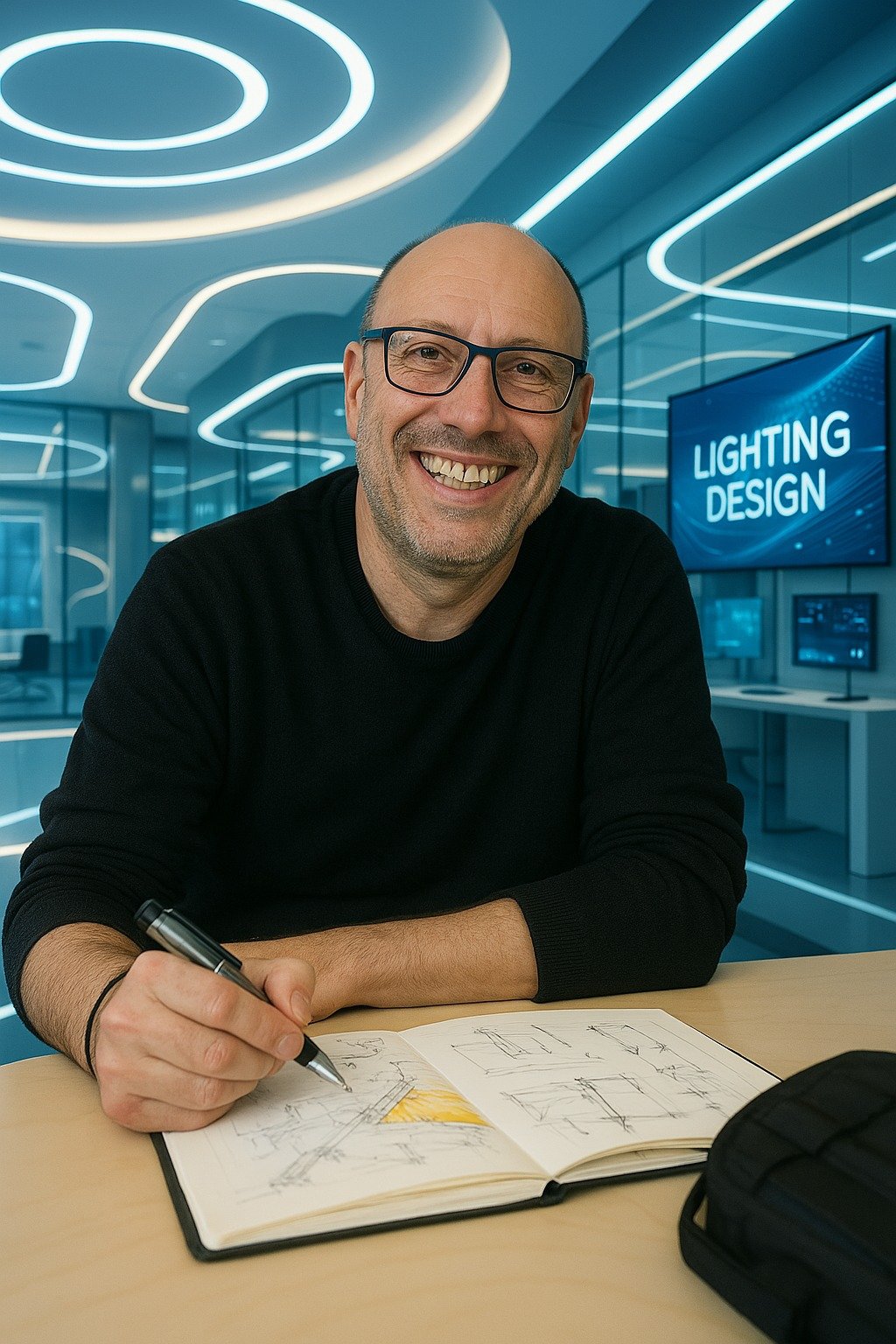25-04 / AI and the future of lighting design
This blog has been written by me without the assistance of any AI tool 😊
The picture however was created by Mid Journey with a minimal prompt asking it to put my picture into a future lighting design surrounding ( I am still learning )
April 2025
Over the coming months I will be conducting interviews with AI trail blazers and innovators in the design industry to get a better understanding of the why, what and how of using AI tools in our design profession. Some of us are excited about the opportunities of using AI tools, some are apprehensive, perhaps even scared and others just plainly reject it. A bit like rejecting the new generation LED technology in favour of the good old incandescent lamp!
Just to put myself into context here, I started my career in lighting design, without the existence of computers, let alone mobile devices. We communicated via telex and fax machines. For meetings we brought rolls of blue-prints and mood boards that had images cut out from magazines! Presentations were done with an overhead or a slide projector. My tools were incandescent, fluorescent and metal halide lamps.
So, to find myself in the sunset of my career challenged by smart lighting solutions and AI tools is nothing but amazing. Never a dull moment in lighting design! How lucky we are in our profession to have witnessed and experienced such amazing evolution. And the end is far from being in sight, on the contrary!
It is my humble opinion that we need to embrace the AI tsunami that is coming our way, there is simply no way around it. But rather than panicking and hap-hazardly starting to shoot around with AI tools without fundamental understanding, we need to take a step back, make ourselves familiar with what is out there (which is a moving target by the way) and understand where AI will be able to help us, make our lives easier.
Most of us want AI to relieve us from the boring tasks like production work and documentation, fair enough. AI also will speed up things, allowing us to do more and since we do work with billable hours, that might be a positive thing.
But how do we deal with this, how do we remain in control, project and use that towards our clients in integrity and without losing our intellectual property, if it still can be considered ours at all? Do we declare our use of AI? (I think we should for transparency!).
This is what I am going to explore through my interviews that will be debuting in the coming weeks and share with you. Getting various insights, various experiences from people with different backgrounds.
I would love the feedback, any experiences that people already have with using AI tools, good and bad, the fears and opportunities. Please share, as we need to control AI in the right way and apply “it” properly in a world where we do want the lighting designer to thrive and remain the creator in chief! Let me know!


